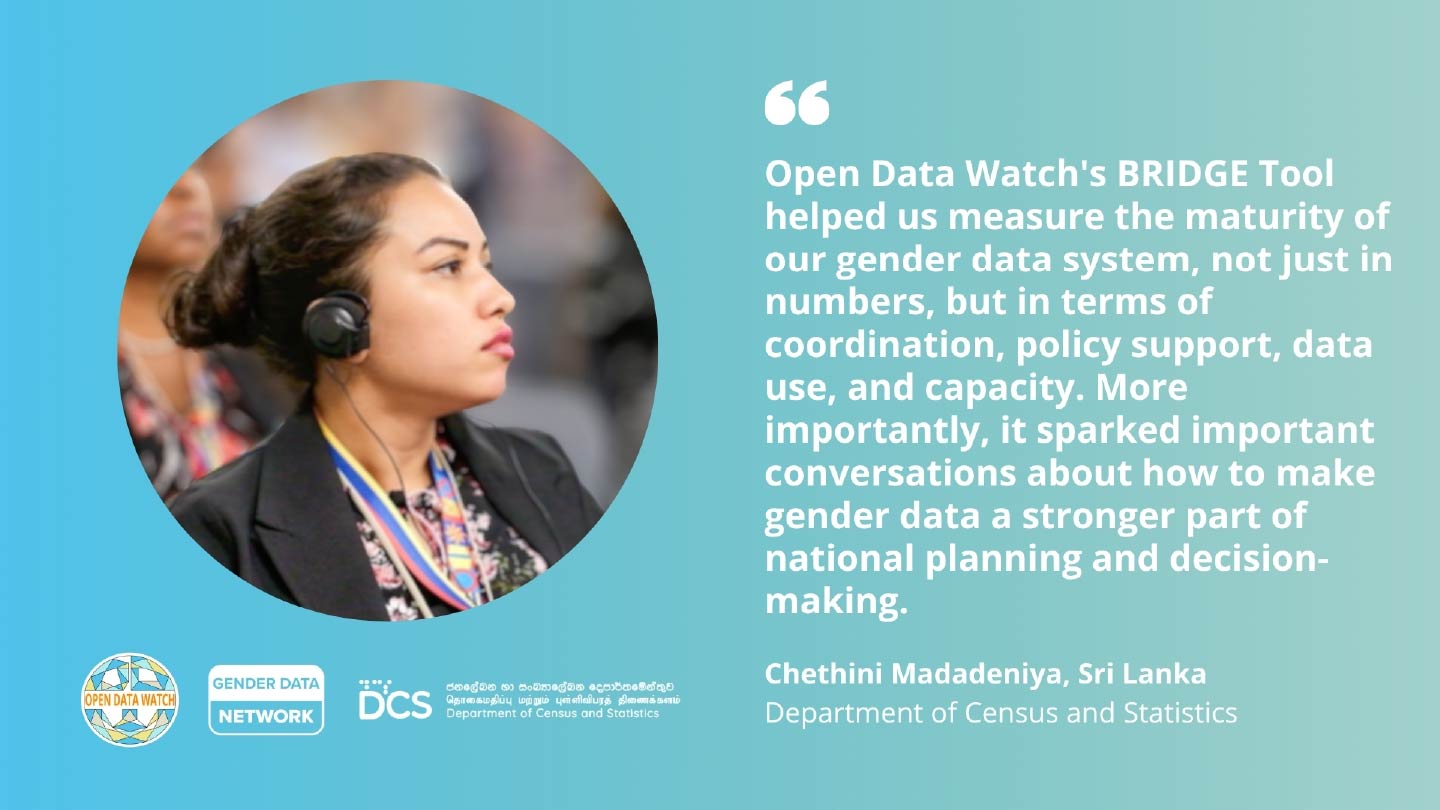Building Bridges for Better Gender Data in Sri Lanka
By Chethini Madadeniya, Statistician
Sri Lanka Department of Census and Statistics
20 November 2025
This blog post originally appeared on the Gender Data Network website.
When I joined the Gender Data Network (GDN) in 2024, I didn’t realize just how much it would shape my perspective on gender statistics. GDN quickly became a space for learning, sharing experiences, and connecting with colleagues from across the world who face similar challenges and ambitions.
Around the same time, at the Department of Census and Statistics (DCS) in Sri Lanka, we were strengthening our focus on gender data. So, when the BRIDGE Tool, a data system maturity model for building responsive Investments in data for gender equality, developed by Data2X and Open Data Watch (ODW), was introduced through the GDN, the timing couldn’t have been better.
We were in the early stages of preparing the Sri Lanka Strategy for the Development of Statistics (SLSDS) 2025–2030, our first ever national statistical strategy. From the very beginning, it was clear to me that the BRIDGE Tool could offer exactly what we needed: a structured way to understand where our gender data system stands and how we can move forward.
Implementing the tool was a collaborative effort involving senior officers from several key institutions within Sri Lanka’s National Statistical System. It was inspiring to see the level of engagement and enthusiasm. Through discussions and self-assessments, we began to see a clearer picture of our strengths and where we needed to improve.
The BRIDGE Tool helped us measure the maturity of our gender data system, not just in numbers, but in terms of coordination, policy support, data use, and capacity. More importantly, it sparked important conversations about how to make gender data a stronger part of national planning and decision-making.
A key finding of the BRIDGE assessment highlighted the need for sustained investments in regularly producing Gender-Based Violence (GBV) indicators. Notably, the assessment identified potential opportunities for leveraging alternative data sources. Building on this, the Department of Census and Statistics (DCS) is currently exploring non-traditional data sources to enhance GBV data collection.
Looking ahead, a collaborative decision was made to repeat this assessment regularly to track our progress and to monitor the gender statistics components of the upcoming SLSDS. The tool’s maturity model also gives us useful benchmarks that will guide future investments in gender data and statistical capacity development.
For me personally, this experience has been a reminder of the power of collaboration. Tools like BRIDGE are important, but what truly makes them work is the community behind them, the shared commitment to use data for equality and inclusion.
Being part of the GDN has shown me how much we can achieve when we learn from one another. As Sri Lanka continues to strengthen its gender data system, I’m proud to know that our work contributes to a larger global effort to ensure that data truly represents everyone.








